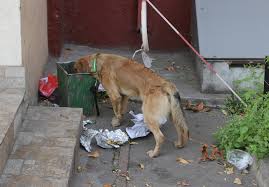
There are two types of dogs when it comes to eating. Those that live for food. Labradors are often a good example of this type of dog. The second type is dogs that eat to live. Often many of the toy breeds fit into this group.
If a dog is not eating it is probably for one of two reasons.
Firstly, they are sick and there is a medical reason. In this situation, you must consult your vet for the best course of action. If your dog is normally a good eater and suddenly develops a diminished appetite there may be something to be concerned about.
If they have lost weight, had vomiting or diarrhea, check with your vet before assuming they are being picky. Another reason a dog may have a loss of appetite is any problem with their teeth or mouth. Check their mouth to see if there is anything obvious wrong or have your vet examine their mouth.
If you have eliminated a health issue as the problem you may be reasonably certain that you have created a picky eater.
If a healthy dog is refusing to eat it is likely they are being deliberately picky. Dogs are very capable of strategic manipulation. They are trying to get you to give them something they want. They will not starve themselves but will hold out for as long as possible.
A healthy dog can generally go two days without eating. By that time they will be hungry enough to eat. In fact, a healthy adult dog can fast for up to 7 days. With a puppy consult your vet if they haven’t eaten for more than 24 hours.
Feeding your dog extra treats an goodies your dog may develop into a picky eater over time. Especially if other people in the house are slipping them extra goodies and table scraps. If your dog is gaining weight yet not eating their meals, this is a likely scenario. Another issue that can develop from this is behavior problems around food such as aggression. Your dog may think that they are in control of when and what they eat.
Also, remove any opportunity for them to steal food or getting into the trash.

How to make a picky dog eat
Stop feeding extra treats and table scraps. Stick to a set daily feeding schedule. Put down the set amount of food at a set feeding time each day and wait. If your dog won’t eat that food, repeat the process the next day. It will not hurt them to go a day or two without eating as long as they are in good health. This way they learn that this is the only food they will be getting. You take back control of the food.

Take the food away when your dog walks away. Free feeding can encourage a dog to be pickier. Limit the time they have to eat. Around 30 minutes is a good guideline.
Reward your dog with praise and pats when they have eaten their food. this will help to reinforce the wanted behavior and make eating their food a positive experience. Give attention only after the food has been eaten.
Stay out of the area while they eat. This gives them a quiet safe place with no perceived competition.
Check the food you are feeding isn’t out of date or stale.
Don’t keep changing their food. This can upset their stomach and make them think there are other options.
If you do consider changing their diet do it gradually. Mix 10% of the new food into the existing diet the first few days. Then gradually increase the percentage over the course of a week.
Consider whether you may be feeding too much food. As dogs get older or they become less active their appetite may have decreased. In the hotter weather dogs also tend to eat less.
If your dog won’t eat dry food try a different flavor. In addition, you can add a spoon or two of wet food and mix it in. Or you can add a warm chicken broth or stock to give an extra smell. Dilute the broth or stock as many of these have a high sodium (salt) content. Ideally, use a low or no sodium stock or broth. Dogs have way fewer taste buds than we do. The pleasure in eating is not so much in the taste. It is more about the smell and texture.
Give your dog some exercise or go for a walk 30 minutes prior to mealtime. This often increases their appetite.

Use a puzzle toy to feed them. Making it a game may encourage your dog to eat. This will provide mental enrichment at the same time.
Patience, self-discipline, and consistency will cure your dog of their picky eating.
In summary
If your dog stops eating or has a loss of appetite eliminate health or mouth issues as the cause. Consult with your vet if you have any doubts
Don’t allow free feeding or grazing. Remove the food if they haven’t eaten it with 15 – 30 minutes
Stop giving them treats and table scraps until they have developed the eating habit you want. Ensure the whole family co-operates with this.
Don’t watch them eat. Give them their space and don’t give them attention until they have eaten their meal. Reward them with praise and pats to reinforce the behavior making it a positive experience for them.
Give your dog some exercise or a walk al an hour prior to feeding to increase their appetite.
Be patient and ensure you maintain your self-discipline. Your dog may be waiting for you to give in first. Be consistent.